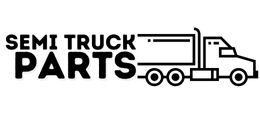Enhance Stability A Comprehensive Guide to Truck Shock Absorbers
Understanding the Importance of Truck Shock Absorbers
Truck shock absorbers serve as the unsung heroes of vehicle stability, silently working to ensure a smooth and controlled ride. In this chapter, we delve into the critical role that shock absorbers play in enhancing stability on the road.
Without effective shock absorbers, a truck’s suspension system would be prone to uncontrolled movements, leading to a bumpy, uncomfortable ride. These vital components work by dampening the vibrations and impacts that occur as your truck traverses uneven terrain or encounters obstacles on the road.
One of the primary functions of shock absorbers is to maintain tire contact with the road surface, even under challenging conditions. By absorbing the energy generated by bumps and potholes, shock absorbers prevent excessive bouncing and ensure consistent traction, ultimately improving handling and control.
Moreover, truck shock absorbers play a crucial role in load-bearing scenarios. Whether you’re hauling heavy cargo or towing a trailer, properly functioning shock absorbers help distribute weight evenly, minimizing the risk of swaying or instability.
In essence, understanding the importance of truck shock absorbers is paramount for every truck owner. By appreciating their role in maintaining stability and safety, you’ll be better equipped to recognize when these components require attention or replacement, ultimately ensuring a smoother, more secure driving experience.
Signs of Worn-Out Shock Absorbers
Identifying the signs of worn-out shock absorbers is crucial for maintaining your truck’s stability and safety on the road. In this chapter, we explore the telltale indicators that your shock absorbers may be due for replacement.
One of the most noticeable symptoms of worn-out shock absorbers is excessive bouncing or jolting, especially when driving over bumps or rough terrain. If your truck’s ride feels excessively rough or uncomfortable, it could be a sign that the shock absorbers are no longer effectively dampening the suspension’s movements.
Uneven tire wear is another red flag to watch out for. Worn shock absorbers can cause tires to wear unevenly, with patterns such as cupping or scalloping appearing on the tread surface. This not only compromises tire performance but also indicates a loss of stability and traction.
As shock absorbers deteriorate, you may experience longer stopping distances when braking. Without proper damping, the suspension system cannot effectively control the transfer of weight during braking, potentially leading to decreased stopping power and increased risk of accidents.
Decreased stability when cornering is yet another sign of worn-out shock absorbers. If your truck feels less responsive or exhibits excessive body roll during turns, it’s likely due to compromised shock absorber performance.
By recognizing these signs early on, you can address shock absorber issues before they escalate, ensuring optimal stability and safety for you and your vehicle. Regular inspections and prompt replacement of worn-out shock absorbers are essential maintenance practices to uphold the performance and longevity of your truck’s suspension system.
Choosing the Right Shock Absorbers
Selecting the appropriate shock absorbers for your truck is paramount to optimizing stability and performance. In this chapter, we explore the factors to consider when choosing the right shock absorbers for your vehicle.
-
Vehicle Specifications:
Begin by considering your truck’s make, model, and specifications. Different vehicles may require specific types or sizes of shock absorbers to ensure compatibility and optimal performance.
- Driving Conditions: Evaluate the typical driving conditions you encounter. If you frequently traverse rough terrain or off-road environments, you’ll need shock absorbers designed to handle such challenges. Conversely, if you primarily drive on smooth highways, you may prioritize comfort and ride quality.
- Load Capacity: Take into account the weight you typically carry in your truck. Heavy loads can place additional strain on shock absorbers, necessitating options with higher load-bearing capacities for enhanced stability and control.
- Type of Shock Absorbers: Consider the various types of shock absorbers available, such as gas-charged, hydraulic, or adjustable shocks. Gas-charged shocks, for example, offer improved performance and durability, making them ideal for heavy-duty applications.
- Budget: Determine your budget for shock absorber replacement or upgrades. While quality should not be compromised for cost, there are options available to suit a range of budgets without sacrificing performance or safety.
- Reviews and Recommendations: Research customer reviews and seek recommendations from trusted sources, such as mechanics or fellow truck owners. Their insights can provide valuable guidance in selecting reputable brands and models.
By carefully considering these factors, you can confidently choose the right shock absorbers to enhance stability, comfort, and safety for your truck. Investing in high-quality shock absorbers tailored to your specific needs will ultimately contribute to a smoother, more enjoyable driving experience.
Installing Truck Shock Absorbers
Proper installation of truck shock absorbers is essential to ensure they function effectively and contribute to stability on the road. In this chapter, we provide a step-by-step guide on how to install shock absorbers correctly.
-
Gather Necessary Tools:
Before beginning the installation process, gather the necessary tools and equipment, including wrenches, sockets, jack stands, and a hydraulic jack. Having everything on hand will streamline the installation process.
- Safety Precautions: Prioritize safety by parking your truck on a level surface and engaging the parking brake. Additionally, use jack stands to support the vehicle securely while working underneath it, and wear appropriate safety gear, such as gloves and eye protection.
- Locate and Remove Old Shock Absorbers: Start by locating the old shock absorbers on your truck. Depending on the vehicle’s configuration, they may be mounted near the wheels or within the suspension system. Use the appropriate tools to remove the mounting bolts and detach the old shock absorbers.
- Prepare New Shock Absorbers: Before installing the new shock absorbers, inspect them for any defects or damage. Ensure they match the specifications of your truck and are compatible with your vehicle’s suspension system.
- Install New Shock Absorbers: Position the new shock absorbers in place and secure them using the mounting bolts. Tighten the bolts to the manufacturer’s specifications, ensuring a snug fit without over-tightening.
- Double-Check Installation: Once the new shock absorbers are installed, double-check all connections and ensure they are securely fastened. Lower the vehicle from the jack stands and perform a visual inspection to confirm everything is in order.
- Test Drive: Before hitting the road, take your truck for a test drive to assess the performance of the new shock absorbers. Pay attention to ride quality, stability, and handling, making any necessary adjustments as needed.
By following these steps and adhering to safety precautions, you can successfully install truck shock absorbers and enjoy improved stability and comfort during your drives. If you’re uncertain about the installation process, don’t hesitate to seek assistance from a qualified mechanic.
Maintenance Tips for Longevity
Maintaining your truck’s shock absorbers is essential to ensure their longevity and continued effectiveness in enhancing stability. In this chapter, we provide valuable maintenance tips to help you keep your shock absorbers in optimal condition.
-
Regular Inspections:
Schedule routine inspections of your truck’s shock absorbers to check for signs of wear, damage, or leaks. Look for oil residue around the shock absorber body or mounting points, as this may indicate a leak.
- Cleaning: Keep the shock absorbers clean by regularly removing dirt, grime, and road debris. Use a mild detergent and water to clean the external surfaces, being careful not to damage any seals or components.
- Lubrication: Lubricate the shock absorber bushings and mounting hardware as needed to prevent corrosion and ensure smooth operation. Use a silicone-based lubricant or a lubricant recommended by the manufacturer.
- Addressing Leaks: If you notice any oil leaks or loss of fluid from the shock absorbers, address the issue promptly. Leaking shock absorbers can lead to diminished performance and potential safety hazards. Consider consulting a professional mechanic for repairs or replacement.
- Replacing Worn-Out Components: As shock absorbers age, internal components such as seals and valves may wear out, compromising performance. If you experience persistent bouncing, excessive vibration, or instability while driving, it may be time to replace the shock absorbers.
- Avoid Overloading: Avoid overloading your truck beyond its specified weight capacity, as this can place undue strain on the shock absorbers and other suspension components. Distribute loads evenly and consider using additional support devices, such as air springs, when carrying heavy loads.
- Follow Manufacturer Guidelines: Adhere to the manufacturer’s maintenance recommendations and service intervals for your truck’s shock absorbers. This may include periodic fluid checks, adjustments, or replacements based on mileage or driving conditions.
By incorporating these maintenance tips into your routine vehicle care regimen, you can extend the lifespan of your truck’s shock absorbers and ensure reliable performance for miles to come. Prioritizing proper maintenance will not only enhance stability and safety but also save you from costly repairs in the long run.
Advantages of Upgrading Truck Shock Absorbers
Upgrading your truck’s shock absorbers can offer numerous benefits beyond just enhancing stability. In this chapter, we explore the advantages of investing in upgraded shock absorbers for your vehicle.
-
Improved Handling:
Upgraded shock absorbers are designed to provide better control and responsiveness, particularly during cornering and maneuvering. They help minimize body roll and enhance overall handling, resulting in a more confident and enjoyable driving experience.
- Enhanced Comfort: High-performance shock absorbers offer superior damping characteristics, reducing vibrations and harsh impacts from road irregularities. This results in a smoother and more comfortable ride, especially on rough terrain or long journeys.
- Increased Load Capacity: Some upgraded shock absorbers are specifically engineered to handle heavier loads more effectively. By upgrading to shocks with higher load capacities, you can improve stability and control when carrying heavy cargo or towing trailers.
- Adjustability: Certain aftermarket shock absorbers feature adjustable settings, allowing you to fine-tune suspension stiffness and damping according to your preferences or driving conditions. This versatility enables you to tailor your truck’s ride characteristics to suit varying scenarios, whether it’s highway cruising or off-road adventures.
- Durability and Longevity: Upgraded shock absorbers often boast enhanced construction materials and superior build quality compared to stock components. This results in greater durability and longevity, reducing the need for frequent replacements and maintenance.
- Performance Enhancements: In addition to improving stability and comfort, upgraded shock absorbers can also contribute to overall performance gains. By optimizing suspension dynamics and reducing energy loss, they can enhance traction, braking efficiency, and cornering capabilities, leading to a more dynamic and engaging driving experience.
- Customization Options: Upgrading your truck’s shock absorbers allows you to customize its suspension system to better suit your specific needs and preferences. Whether you prioritize comfort, off-road capability, or performance driving, there are aftermarket options available to accommodate a wide range of requirements.
By considering these advantages, you can make an informed decision about upgrading your truck’s shock absorbers, ultimately unlocking the full potential of your vehicle’s suspension system and improving its overall performance and stability.
Common Misconceptions About Truck Shock Absorbers
Despite their importance, truck shock absorbers are often subject to misconceptions and myths. In this chapter, we debunk some of the common misunderstandings surrounding shock absorbers to provide clarity and understanding.
-
Firmer Equals Better:
One common misconception is that firmer shock absorbers always provide superior performance. While firmer shocks may offer improved handling and responsiveness in certain situations, excessively stiff shocks can compromise comfort and traction, especially on uneven surfaces.
- Lifetime Warranty Guarantees Perpetual Performance: Some may believe that a lifetime warranty ensures indefinite shock absorber performance. However, shock absorbers are subject to wear and degradation over time, and warranties typically only cover defects in materials or workmanship, not normal wear and tear.
- Bigger is Always Better: Another misconception is that larger shock absorbers equate to better performance. While larger shocks may offer increased fluid capacity and cooling, proper sizing and compatibility with your vehicle’s suspension system are more critical factors in determining performance.
- Shock Absorbers Don’t Require Maintenance: Many truck owners overlook shock absorber maintenance, assuming they’re maintenance-free components. In reality, regular inspections, cleaning, and lubrication are essential for prolonging shock absorber lifespan and ensuring optimal performance.
- All Shocks Are Created Equal: Not all shock absorbers are created equal, and choosing the right ones for your truck requires careful consideration of factors such as vehicle weight, driving conditions, and desired ride quality. Investing in quality shocks tailored to your specific needs can make a significant difference in stability and comfort.
- Upgrading Shocks is Only for Off-Roaders: While upgraded shocks are indeed popular among off-road enthusiasts, they offer benefits beyond just off-road performance. Upgraded shocks can improve stability, handling, and comfort for everyday driving, making them a worthwhile investment for any truck owner.
- Shock Absorbers Last Forever: Contrary to popular belief, shock absorbers do not last indefinitely. Over time, internal components wear out, leading to diminished performance and potentially unsafe driving conditions. Regular inspections and timely replacement are essential for maintaining optimal stability and safety.
By dispelling these common misconceptions, truck owners can make more informed decisions about shock absorber selection, maintenance, and replacement, ultimately ensuring a safer and more enjoyable driving experience.
Future Innovations in Truck Shock Absorbers
The automotive industry is constantly evolving, and truck shock absorbers are no exception. In this chapter, we explore the exciting future innovations that promise to revolutionize the performance and capabilities of truck suspension systems.
-
Active Damping Technology:
One promising development is the integration of active damping technology into shock absorbers. These smart shocks use sensors and onboard computer systems to continuously adjust damping rates in real-time, providing optimal performance and comfort across a variety of driving conditions.
- Electromagnetic Suspension: Electromagnetic suspension systems utilize electromagnets to control the stiffness and damping characteristics of shock absorbers. By adjusting magnetic fields, these systems offer unparalleled responsiveness and adaptability, enhancing both ride quality and stability.
- Predictive Suspension Control: Future shock absorbers may incorporate predictive algorithms to anticipate road conditions and adjust damping settings proactively. By analyzing data from onboard sensors and navigation systems, these systems can preemptively optimize suspension performance for maximum comfort and stability.
- Energy Harvesting Shocks: Energy harvesting shock absorbers are designed to convert kinetic energy from suspension movement into electrical power. This harvested energy can then be used to power auxiliary systems or recharge onboard batteries, improving overall vehicle efficiency and reducing fuel consumption.
- Carbon Fiber Components: The adoption of carbon fiber materials in shock absorber construction holds the potential to reduce weight without compromising strength or durability. Lightweight shock absorbers contribute to improved fuel economy, handling, and performance while reducing unsprung mass.
- Adaptive Materials: Advancements in materials science may lead to the development of shock absorbers constructed from adaptive materials that can change stiffness and damping properties on demand. These self-adjusting shocks offer unmatched versatility and performance, adapting instantaneously to varying driving conditions.
- Integrated Suspension Systems: Future trucks may feature fully integrated suspension systems that seamlessly integrate shock absorbers, springs, and other components for optimal performance and efficiency. These holistic systems leverage advanced engineering and design to deliver superior stability, comfort, and handling.
By embracing these future innovations, the next generation of truck shock absorbers promises to elevate vehicle performance to new heights. Whether it’s through advanced electronics, smart materials, or holistic system integration, the future of truck suspension holds exciting possibilities for enhanced stability, safety, and comfort on the road.
For detailed information, you can contact us at Truck Shock Absorbers


